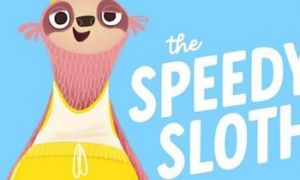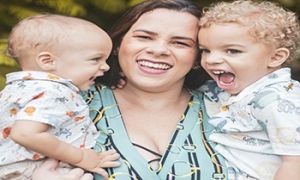Running records are written in present tense and recorded as the action is happening. It gives a minute-by-minute description of what goes on in a setting with a specific child or group of children.
Running records enables Educators to record all significant behaviours, interactions, conversation as it occurs then and there.
The primary goal for using a Running Record is to “obtain a detailed, objective account of behaviour without inference, interpretations, or evaluations” (Bentzen, 2009, p.112). You will know you have gathered good evidence when you can close your eyes and you can “see” the images in your mind as they are described in your Running Record.
How To Write A Running Record
When writing a running record you must use present tense and you are detailing the action that is happening in front of you as it occurs.
You will record the “setting, situation and sequence” in which the behaviour occurred. Be as descriptive as possible and yet be as concise as possible.
When writing a running record you must be quick and you will be out of ratio as you step back and observe from a distance. So, it's important to make sure that you're covered.
Give yourself a timeframe (for example 10 minutes) where you will become a spectator and begin to observe and write what is happening as it happens.
Advantages Of A Running Record
- Provides detailed data about the who, what, where, and when
- Evidence is documented as it occurs, in a sequence
- Provides objective and descriptive evidence
- Appropriate for gathering baseline information about the child’s interests, abilities and skill level
- Ideal for tracking a child’s development over time
- Less structured, more free flowing
- Evidence can be gathered formally or informally
- Interpretations and reflections can be added later
Disadvantages
- Time consuming
- May be difficult to keep up and follow along as children move quickly from one activity to another
- Not a practical technique for teachers who are in ratio
- Behaviours may not be typical for that observation day as compared to other days
Sample Of Running Record
When writing running records, remember to be positive, object and use descriptive language.
Annette kneels down next to Maya and begins wiping her face with a wet cloth. As Annette starts to wipe Maya’s right hand, Maya grabs the cloth with her left hand and yanks it away from Annette. Annette asks, “You wanna do it?” Maya starts wiping her mouth and tongue, clutching the cloth tightly in both hands. Annette smiles, claps her hands together and exclaims, “OK! Good job!” Annette reaches out and begins to lift Maya’s bib over her head. Maya transfers the wet cloth to her right hand, then, as the bib is lifted up and over her head, grabs it with both hands again. She wipes the cloth across her cheek and mouth, then vigorously swipes at her tongue four times.
Running Records are a useful method to record any area of development, note down child’s interests as they occur and provides a holistic approach to observing a child.
References:
- Running Records, CCMD
- A Closer Look at Observation Methods, Tools and Techniques, Gina Peterson and Emily Elam, LibreTexts
- Different Types Of Observation Methods, Aussie Childcare Network



 Here is the list of the EYLF Learning Outcomes that you can use as a guide or reference for your documentation and planning. The EYLF
Here is the list of the EYLF Learning Outcomes that you can use as a guide or reference for your documentation and planning. The EYLF The EYLF is a guide which consists of Principles, Practices and 5 main Learning Outcomes along with each of their sub outcomes, based on identity,
The EYLF is a guide which consists of Principles, Practices and 5 main Learning Outcomes along with each of their sub outcomes, based on identity, This is a guide on How to Write a Learning Story. It provides information on What Is A Learning Story, Writing A Learning Story, Sample
This is a guide on How to Write a Learning Story. It provides information on What Is A Learning Story, Writing A Learning Story, Sample One of the most important types of documentation methods that educators needs to be familiar with are “observations”. Observations are crucial for all early childhood
One of the most important types of documentation methods that educators needs to be familiar with are “observations”. Observations are crucial for all early childhood To support children achieve learning outcomes from the EYLF Framework, the following list gives educators examples of how to promote children's learning in each individual
To support children achieve learning outcomes from the EYLF Framework, the following list gives educators examples of how to promote children's learning in each individual Reflective practice is learning from everyday situations and issues and concerns that arise which form part of our daily routine while working in an early
Reflective practice is learning from everyday situations and issues and concerns that arise which form part of our daily routine while working in an early Within Australia, Programming and Planning is reflected and supported by the Early Years Learning Framework. Educators within early childhood settings, use the EYLF to guide
Within Australia, Programming and Planning is reflected and supported by the Early Years Learning Framework. Educators within early childhood settings, use the EYLF to guide When observing children, it's important that we use a range of different observation methods from running records, learning stories to photographs and work samples. Using
When observing children, it's important that we use a range of different observation methods from running records, learning stories to photographs and work samples. Using This is a guide for educators on what to observe under each sub learning outcome from the EYLF Framework, when a child is engaged in
This is a guide for educators on what to observe under each sub learning outcome from the EYLF Framework, when a child is engaged in The Early Years Learning Framework describes the curriculum as “all the interactions, experiences, activities, routines and events, planned and unplanned, that occur in an environment
The Early Years Learning Framework describes the curriculum as “all the interactions, experiences, activities, routines and events, planned and unplanned, that occur in an environment


